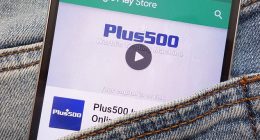
I sat down with Chris Chung of Locate 852 to learn about ad strategy on the popular social media platform.
September 30, 2019 5 min read
Opinions expressed by Entrepreneur contributors are their own.
Most marketers today understand that social media advertising is a critical component of the marketing mix, but sites like Facebook and Instagram can be intimidating for individuals who aren’t especially social media savvy. In order to get a clearer picture of optimal social media ad strategy, I reached out to Chris Chung to get his insights on some of the most common questions that get asked about advertising on Facebook.
1. How much should you spend on Facebook ads?
This question comes up often but people tend to overthink it, according to Chung. He suggests that three better questions to ask are:
- How much is each customer or lead worth to you? Here is a simple formula you can use to calculate the value of a single customer/lead during the first 30 days: (Total 30-Day Revenue) / (Total # of Customers or Leads) = 30-Day Value
- How much of that 30-day value are you willing to spend on acquiring a single customer or lead? Are you willing to spend 25 percent? 50 percent? 75 percent? Or are you willing to spend the full 100 percent knowing that they will buy again in the near future?
- Is your golden number realistic?
Once you calculate the 30-day value and determine the percentage you are willing to spend on acquisition, you then have to research whether the number is realistic. If the industry standard is $20 to acquire a customer per lead and you can only afford to pay $15, Facebook ads might not be your best choice. Alternatively, you might want to see if you are able to increase the value of the customer by changing your offer.
Remember that Facebook is a bidding platform, so whoever pays the most will win the bid. Using the same example, if the industry standard is $20 and you are willing to invest $40 on acquisition and still be profitable, you should note down $40 as your golden number and use it as a benchmark for all your ads.
Related: The Facebook Ads Strategy That Can’t Lose
2. How do you know when to stop your ads?
Once you have your golden number figured out, this part is simple. If the cost per customer/lead is higher than your golden number, you stop the ad. Conversely, if it is equal or lower to the golden number, you should smile, knowing that it is going well and continue to test to see if it can be lowered further.
Chung advises all of his clients to look at the past 3-, 5- and 7-day trends when determining whether to make any changes. If the cost rises above your golden number on only one day out of the past seven, it might just be a bad day. Don’t make the mistake of judging the metric too quickly without enough data and stopping the ads prematurely. Know that Facebook takes one to three days for the ads to start working and level out.
You can set the daily budget to two to five times what the golden number is, but the key thing to remember is that just because you set a high daily budget doesn’t mean that you have to spend it all. It is an indication of how much you are willing to spend, and you can always turn off ads at any given moment.
3. Who do you target when placing ads?
Targeting is a controversial topic in the world of Facebook ads, because some believe that the more layers you choose, the more accurate the targeting. Others would say that not only does it increase the cost, but it makes it difficult to identify where the conversions are coming from. This makes your job as an advertiser more difficult.
What I learned from my conversation with Chung is that I need to ask myself three questions and let the answers determine the targeting for me.
- Who already has my ideal clients? Your ideal clients are already on Facebook, so ask yourself what individuals would they already be following?
- What do they already buy? Identify the purchasing behaviors of your ideal clients. Do they drive a Toyota or Ferrari? Do they shop at Whole Foods or the local supermarket? Pay attention to consumer behavior to identify whether the audience will resonate with your offer.
- Where do they often go? What physical locations would your ideal clients be found? Is it at a sports stadium? Yoga studio? Walmart? If you had to physically go somewhere and bump into this crowd, what place do you think they will most likely be found?
Make a list of your answers for all three questions and arrange them from most likely to least likely to convert. The only thing left is to start testing them to see what works. When Chung places cold traffic ads, he tends to stay away from stacking any interests to be in control of as many factors as possible. By limiting the interests to one interest per ad, for example, you can have a clear indication of which audience converts the best.
Related: 5 Reasons Why You Should Still Be Advertising on Facebook
Conclusion
Taking the plunge into social media advertisement isn’t too daunting when you understand some of the basic metrics behind lead generation, as well as the need to test ads before making major commitments.
This article is from Entrepreneur.com









